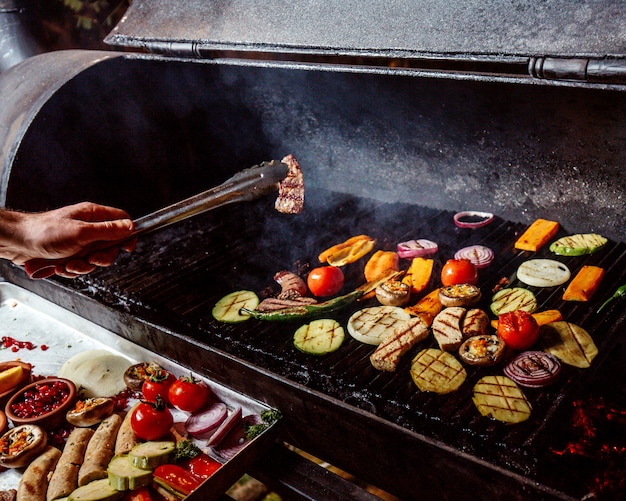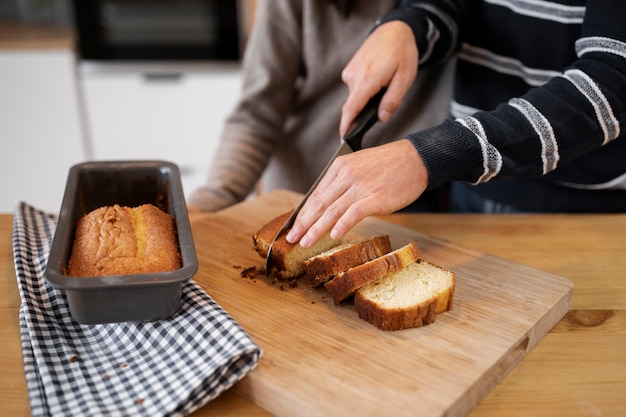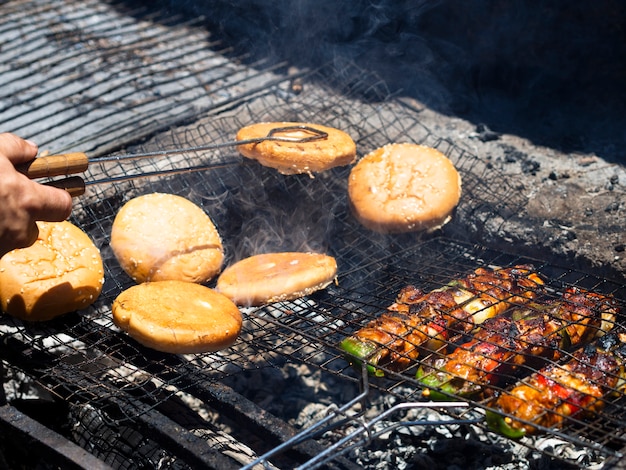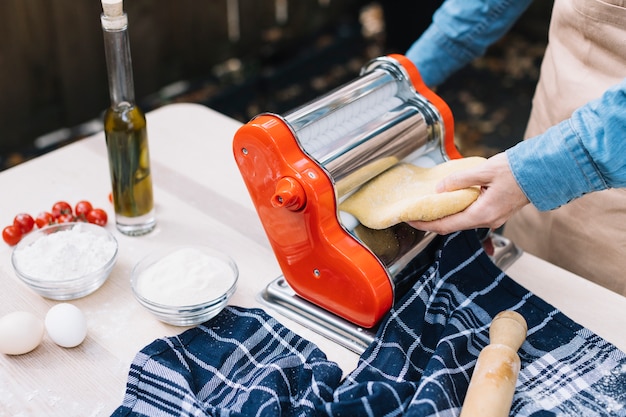(Part 1) Choosing the Right Cut

steak cuts for Oven-Baking
The first step is selecting the right cut of steak. There are so many options, it can be a bit overwhelming. But let me tell you, it's a crucial step in ensuring your steak turns out flavorful and tender. For oven-baking, I find these cuts deliver the best results:- Rib-eye: The king of steak cuts, the rib-eye is known for its abundant marbling, which translates to rich, juicy flavor. It's a fantastic choice for a truly indulgent experience.
- new york strip: Leaner than the rib-eye, the New York strip boasts a beautiful, even texture and a robust, savory flavor. It's a classic for a reason.
- Tenderloin (filet mignon): The epitome of tenderness, the tenderloin, also known as filet mignon, is the most expensive cut, but it's worth every penny for its melt-in-your-mouth texture.
- Sirloin: A budget-friendly option with a good, satisfying flavor, sirloin is slightly tougher than other cuts but still delicious when cooked properly.
Important Notes:
Remember, the thickness of your steak is just as important as the cut. For oven-baking, I highly recommend a steak that's at least 1 inch thick. This allows the steak to cook evenly and retain its juiciness.
Avoid thin steaks, especially for oven-baking. They'll cook too quickly and likely end up dry and tough. Thin steaks are better suited for grilling or pan-frying. For oven-baking, thicker is always better!
(Part 2) Preparing Your Steak

Get That Perfect Sear
The key to a truly delicious oven-baked steak is that irresistible sear. It creates a beautiful, crispy crust that locks in all those flavorful juices. Here's how to get it right:
- Pat Dry: The first step is to pat your steak completely dry with paper towels. This helps the surface to crisp up beautifully and ensures that the sear is even and consistent.
- Seasoning: Now, for seasoning, I'm a firm believer in simplicity. Salt and freshly ground black pepper are all you need to bring out the natural flavors of the steak. However, if you're feeling adventurous, feel free to add other spices like garlic powder, onion powder, smoked paprika, or even a touch of cayenne pepper for a bit of heat.
- Heat Up Your Pan: Use a heavy-bottomed skillet or cast iron pan, which are excellent heat conductors. Heat it over high heat for a few minutes until it's incredibly hot. You want that pan sizzling when you add the steak.
- Sear On Both Sides: Carefully place the steak in the hot pan and let it cook undisturbed for about 2-3 minutes per side. You want a nice, golden-brown crust. Resist the urge to move it around too much. Let it develop a beautiful, caramelized surface.
Avoid Overcrowding:
It's crucial to ensure that your pan isn't too crowded. If you're cooking multiple steaks, do them in batches. Overcrowding the pan will lower the temperature and prevent a good sear. You want each steak to have ample space to brown properly.
(Part 3) Oven-Baking Your Steak

Time to Transfer to the Oven:
Once your steak has that beautiful sear on both sides, it's time to transfer it to the oven. This is where the real magic happens.
- Preheat Your Oven: Preheat your oven to 350°F (175°C). This is a good general temperature for most steaks.
- Transfer to a Baking Sheet: Place the steak on a baking sheet lined with parchment paper or foil. This makes cleanup a breeze and prevents sticking.
- Bake Time: Bake the steak for 10-15 minutes for medium-rare, 15-20 minutes for medium, and 20-25 minutes for medium-well.
Important Notes:
The baking time is a general guideline. Every oven is different, and the thickness of your steak can also influence cooking time. The best way to check for doneness is with a meat thermometer.
Using a Meat Thermometer
A meat thermometer is your best friend when cooking steak. It takes the guesswork out of achieving the perfect level of doneness.
Here's a chart with the internal temperatures for different doneness levels:
| Doneness | Internal Temperature (°F) | Internal Temperature (°C) |
|---|---|---|
| Rare | 125-130 | 52-54 |
| Medium-Rare | 130-135 | 54-57 |
| Medium | 140-145 | 60-63 |
| Medium-Well | 150-155 | 65-68 |
| Well-Done | 160 | 71 |
Rest Your Steak:
Once your steak is cooked to your desired doneness, take it out of the oven and let it rest for 5-10 minutes before slicing and serving. This allows the juices to redistribute throughout the steak, resulting in a more tender and flavorful bite.
(Part 4) steak sauce: The Finishing Touch
The Power of Sauce
A good steak sauce can truly elevate your dish, adding a burst of flavor that complements the steak beautifully. While you can always use your favorite store-bought sauce, I find that homemade sauces are so much more flavorful and satisfying.
I'm a big fan of simple pan sauces. They're quick and easy to make, and they use the delicious juices from the steak to create a truly irresistible sauce.
Making a Pan Sauce
- Deglaze the Pan: After removing the steak, pour off any excess fat from the pan. Then, add a tablespoon of butter or olive oil.
- Add Aromatics: Add a clove of minced garlic, a shallot, or a few sprigs of fresh herbs like thyme or rosemary. Cook for a minute or two, until fragrant.
- Add Wine or Stock: Pour in a splash of red wine or beef stock. Let it simmer for a few minutes until the sauce thickens. You can also add a tablespoon of Worcestershire sauce for extra depth of flavor.
- Season and Serve: Season the sauce with salt and pepper to taste. Spoon the sauce over the steak and serve.
(Part 5) side dishes: Perfect Pairings
Complementary Flavours
A great steak deserves a great side dish. Think about creating a balance of flavors and textures that complement the steak without overpowering it. I like to keep it simple, but here are some of my favorite pairings:
- Roasted Vegetables: roasted asparagus, Brussels sprouts, or carrots are always a winner. Their roasted flavors and textures perfectly complement the richness of the steak.
- mashed potatoes: Creamy, buttery mashed potatoes are a classic side dish for steak, offering a comforting and satisfying element to the meal.
- grilled corn on the Cob: A sweet and smoky side dish that adds a nice contrast to the savory steak, grilled corn on the cob is a summer favorite.
- Green Salad: A refreshing salad with a light vinaigrette is a great way to balance out the richness of the steak.
(Part 6) steak doneness: Know Your Preferences
It's crucial to understand the different levels of doneness for steak and choose the level that best suits your taste preferences.
Rare
Rare steak has a bright red center and a cool touch. It's the most tender, but it's also the least cooked, which means it might not be everyone's cup of tea.
Medium-Rare
medium-rare steak has a pink center and a warm touch. It's a popular choice for its balance of tenderness and flavor. Many consider this the ideal level of doneness for steak.
Medium
Medium steak has a pink center that's starting to turn brown. It has a firmer texture than medium-rare and is a good option for those who prefer a little more cooking.
Medium-Well
Medium-well steak has a brown center with a little bit of pink. It's a good choice if you like your steak cooked through, but still juicy.
Well-Done
Well-done steak is completely brown throughout. It's the most cooked, and it can be dry and tough. It's not my personal preference, but to each their own!
(Part 7) Tips and Tricks: Making the Most of Your Steak
Don't Overcook!
One of the biggest mistakes people make when cooking steak is overcooking it. This leads to a tough and dry steak. Remember, it's always better to err on the side of undercooked. You can always cook it a little longer, but you can't uncook it.
Rest Is Key!
Remember to rest your steak for at least 5 minutes after cooking. This allows the juices to redistribute, resulting in a more tender and flavorful steak.
Use a Sharp Knife!
A sharp knife is essential for cutting steak evenly. A dull knife will tear the meat, which can make it tough and dry.
(Part 8) FAQs: Your Steak Questions Answered
1. What if my steak is too thick?
No worries! You can easily adjust the cooking time. For thicker steaks, add 5-10 minutes to the baking time. Be sure to use a meat thermometer to check for doneness.
2. Can I cook multiple steaks at once?
Absolutely! Just make sure you don't overcrowd the pan. Cook the steaks in batches, searing them separately and then baking them together.
3. What if my steak is undercooked?
If your steak is undercooked, simply return it to the oven for a few more minutes. Check the temperature with a meat thermometer to make sure it reaches your desired doneness.
4. What if my steak is overcooked?
It's not ideal, but you can still make it taste good! Slice the steak thinly and top it with a delicious sauce. A good sauce can help to mask the dryness and add flavor.
5. How do I store leftovers?
Store leftover steak in an airtight container in the refrigerator for up to 3 days. You can reheat it in a pan or in the oven.
Conclusion
And there you have it! The ultimate guide to perfect oven-baked steak. Remember, it's all about choosing the right cut, getting that sear, and baking it to your desired doneness. And don't forget to rest the steak before serving.
This guide is just the starting point. Get creative! Experiment with different seasonings, sauces, and side dishes. You'll be surprised at how delicious and versatile oven-baked steak can be.
So, go on, give it a try! You won't regret it.
Everyone is watching

Corn on the Cob: The Ultimate Guide to Perfectly Cooked Ears
Healthy MealsAh, corn on the cob. Just the name evokes images of sunny days, barbecues, and that sweet, juicy flavour that ...

Scallops: The Ultimate Guide to Perfect Cooking
Healthy MealsAh, scallops. Those delicate, sweet, and utterly delicious morsels of the sea. They hold a special place in my...

Spaghetti Squash: The Ultimate Guide to Cooking and Serving
Healthy MealsRemember that time you saw spaghetti squash at the supermarket, looking all bumpy and strange, and thought, "W...

Salmon Cooking Times: Perfect Guide for Every Recipe
Healthy MealsLet me tell you, cooking salmon is an art form. It's all about getting that perfect balance: juicy and tender,...

Ham Cooking Time: How Long to Bake, Smoke, or Boil a Delicious Ham
Healthy MealsAh, ham. It's a classic, isn't it? A real crowd-pleaser, especially around holidays. And when done right, it'...
